I am not new to gardening (I have had over 60 years exposure). Yet every year I return with fresh hope and seek out an occasional idea. As we approach 2019 I am looking for the inspiration that will lift me and the garden to new heights.
So I am going back to the basics of an absolute beginner and hope to start afresh on 1st January. Some plans are already in place with seed orders actioned and tools cleaned afresh. But first I am now going to visit our nearby RHS garden at Harlow Carr to walk the talk around a good garden, visit the plant shop with my Christmas present vouchers and return my library book on trees.
 The RHS library was closed even though the website said it was open even on bank holidays. Do not believe everything you read on a website – learn by experience! There were many interesting winter trees but sadly most name plates were missing. How can beginners learn if the RHS can’t be bothered.
The RHS library was closed even though the website said it was open even on bank holidays. Do not believe everything you read on a website – learn by experience! There were many interesting winter trees but sadly most name plates were missing. How can beginners learn if the RHS can’t be bothered.
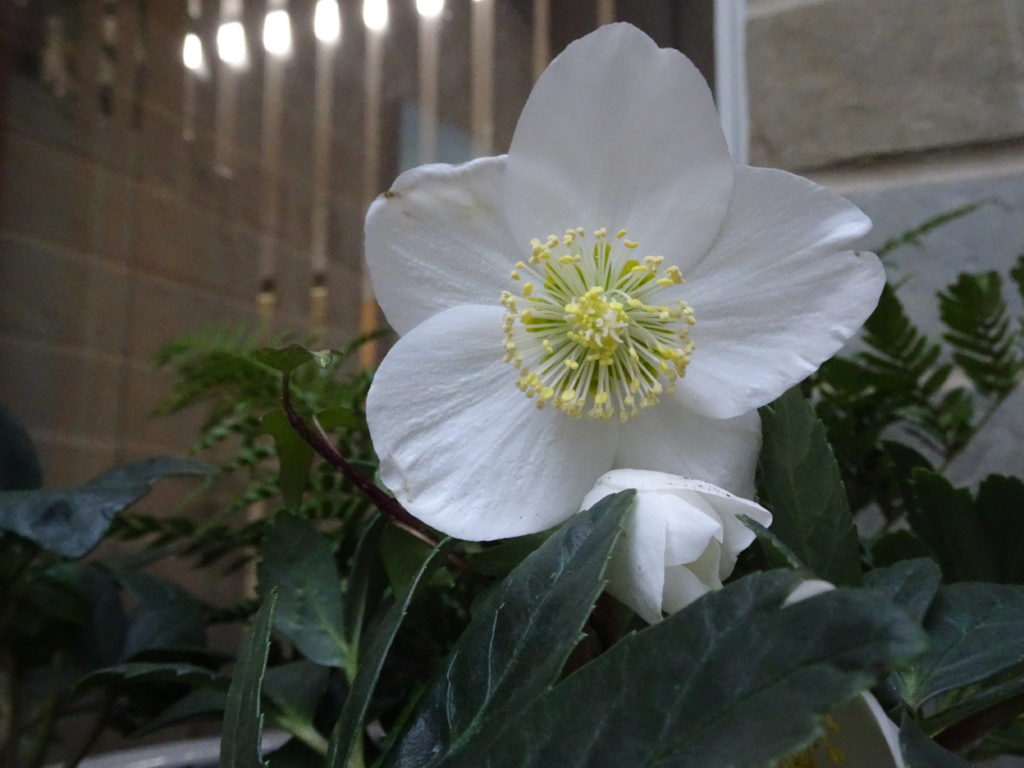
This was a crystal clear flower on a Christmas Rose ( Helleborus niger) growing in a 2 foot high pot. The raised pot made it easier to see and photograph as these Hellbores tend to have flower head droop.
So that is one new inspiration – to use height in all manner of ways to enhance my garden experience and reduce my back ache.
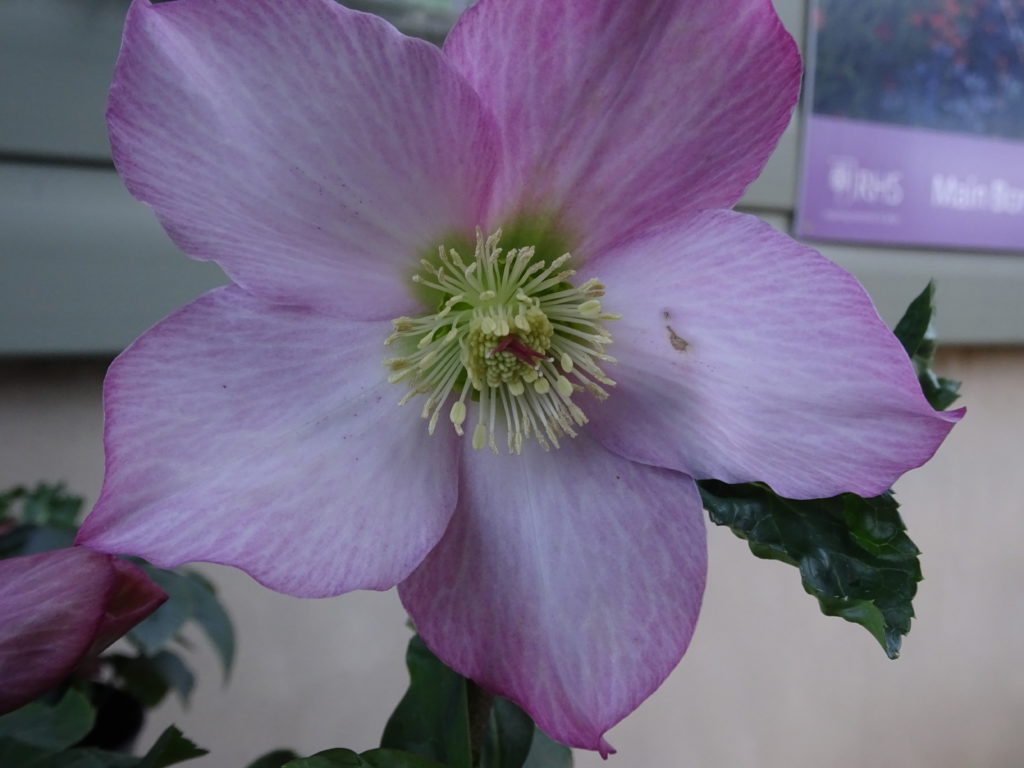
I was lucky to get another upright flower although I cheated a bit by lifting it up with a finger.
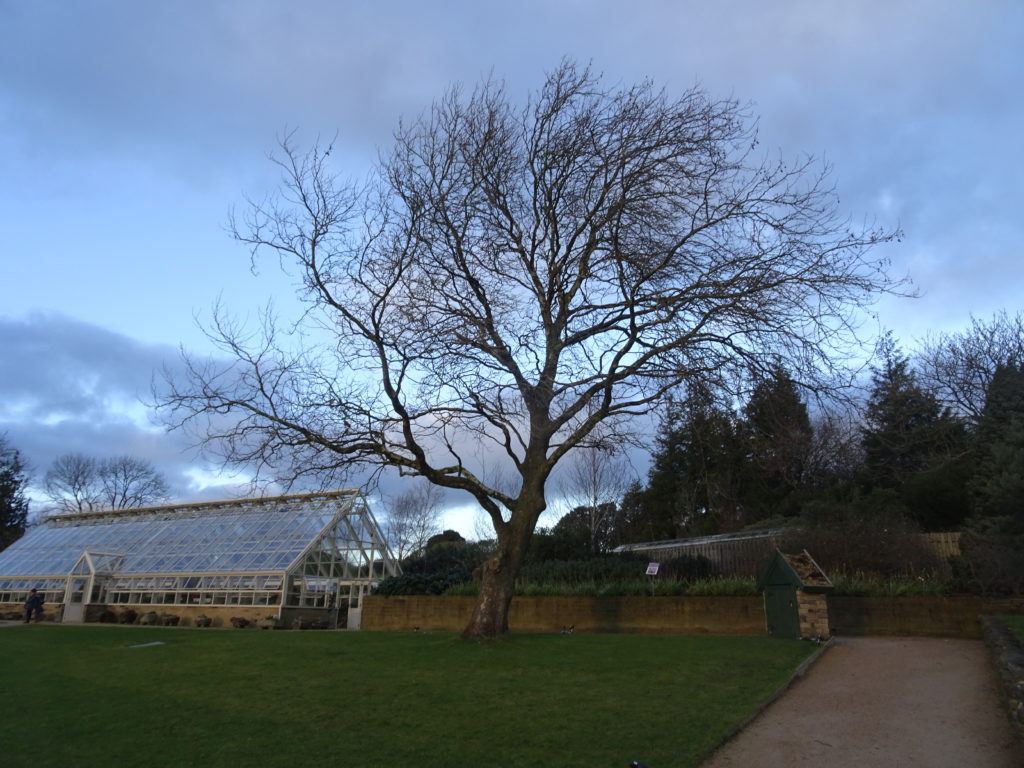
This tree ‘Platanus orientalis’ did still have a label, it was damaged and growing into the bark. It is a better more impressive specimen than my picture shows.
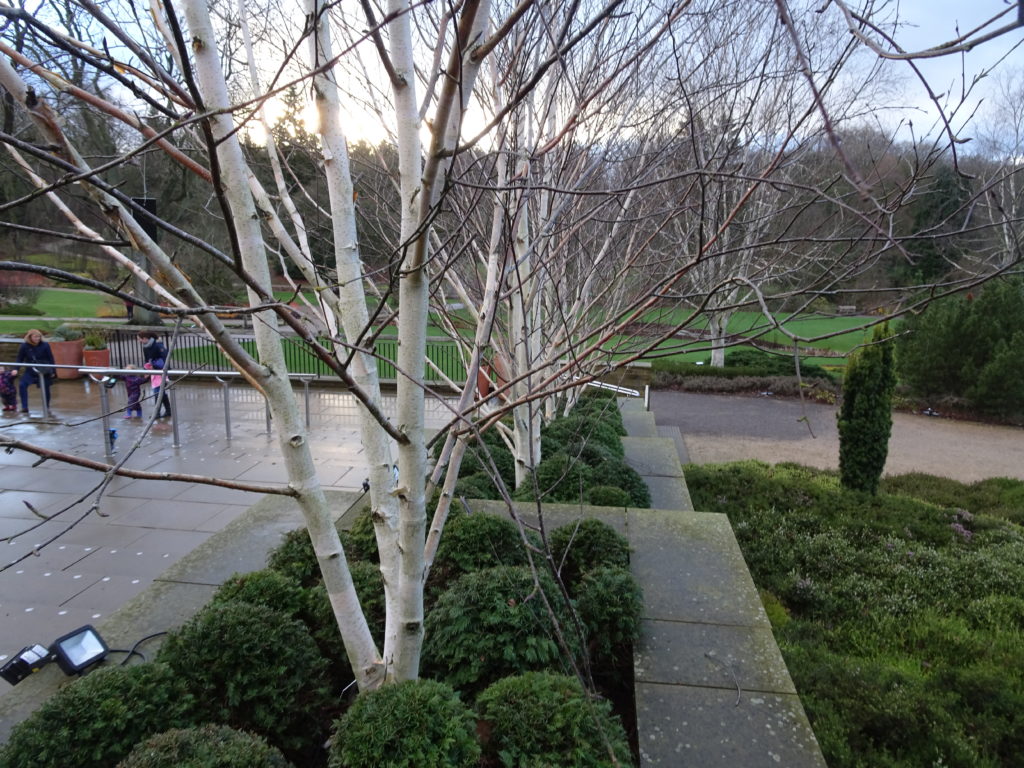 Silver birch Jackmanii, I think, although I didn’t see a label or sign. The mix of straight lines and ball shaped plants was attractive.
Silver birch Jackmanii, I think, although I didn’t see a label or sign. The mix of straight lines and ball shaped plants was attractive.
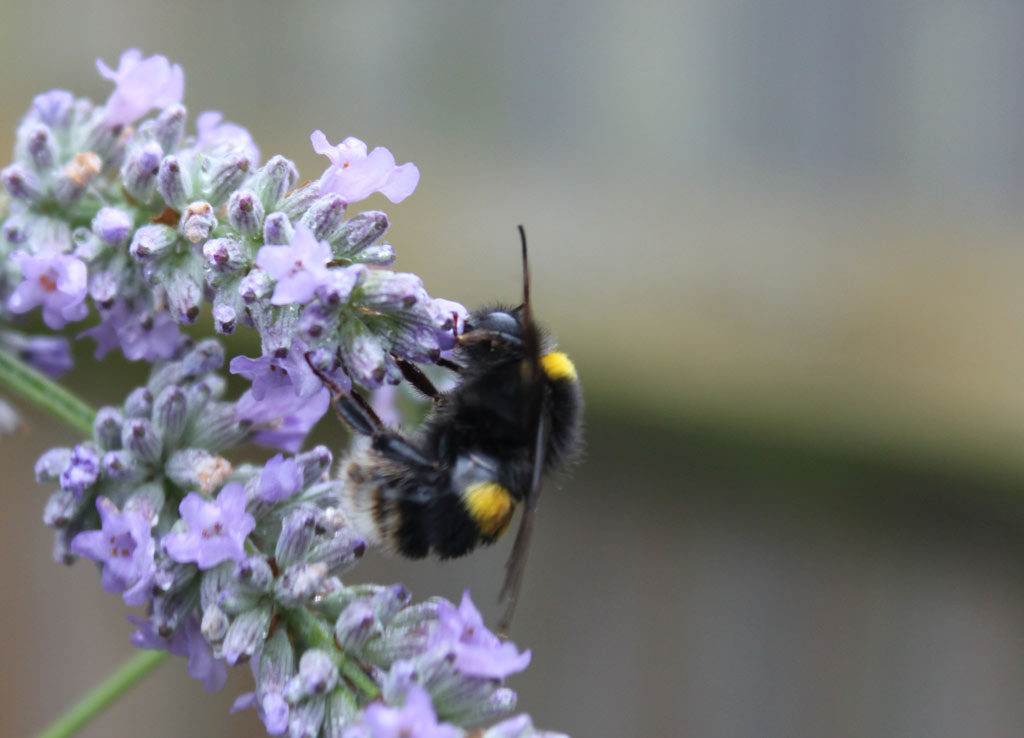






 Silver birch Jackmanii, I think, although I didn’t see a label or sign. The mix of straight lines and ball shaped plants was attractive.
Silver birch Jackmanii, I think, although I didn’t see a label or sign. The mix of straight lines and ball shaped plants was attractive.






